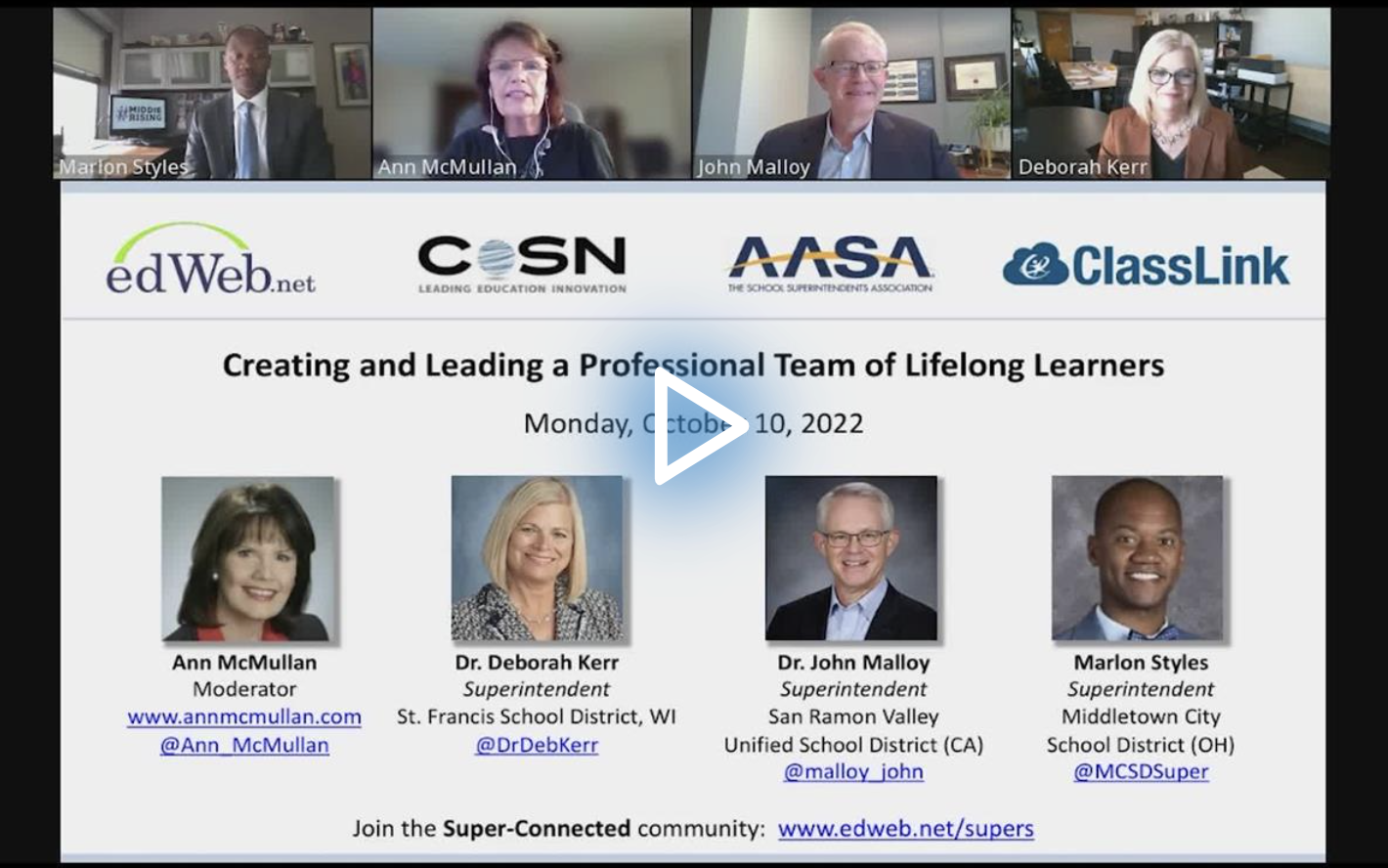Rethinking Professional Learning for Technology Initiatives
Watch the Recording Listen to the Podcast
This edLeader Panel is presented by CoSN and AASA.
Sponsored by ClassLink
Why should professional learning be a part of every technology initiative? Because of equity, said the three leading superintendents on the edLeader Panel, “Creating and Leading a Professional Team of Lifelong Learners.”
Every single student should have access to an educator who can integrate technology into the lessons, and every teacher should have the support of administrators who understand how technology can enhance the learning process. The panelists outlined key factors for successful professional learning experiences, including why innovation should also be inclusive.
- Professional learning should be grounded in the needs of the students. Rather than creating one-size-fits-all workshops, administrators should ask their teachers what they need in order for them to help the students in their specific classrooms. Then, the administrators can help their teachers develop a professional learning pathway that will help achieve improved outcomes for their students.
- The best professional learning coaches are fellow teachers. The panelists agreed that teachers learn best and are more receptive to trying new techniques when they are working with fellow teachers. The idea is to build the capacity by creating teacher-coaches who are willing to experiment and pilot technology integrations and then mentor their colleagues.
- Teachers need time to experiment. Both the early adopters and the more cautious teachers have the same concerns: How will they find enough time to figure out how the new tech works, how can it impact instruction, and how do they implement it? The answer lies with the administrators. They need to create a culture of empowered educators who can dibble and dabble and figure out what works for them and their students. In addition, the administrators need to build professional learning into the school calendar—not just learning days, but time during the regular school week when educators can focus on their own goals.
- Treat the tech for what it is: a resource. Especially for the reluctant adopters, emphasize that the technology is not here to replace them or their lessons. It’s another tool they can use to improve student outcomes. Have other teachers show them how the tech amplifies what they’re already doing.
- Share the results—and the excitement. Teachers feed off of each other’s energy. Create formal and informal moments for them to show how they’re using the technology and what the results are. Reassure them that they don’t need perfect results—it’s about learning what works with the students, what doesn’t, and determining the best way to move forward. The excitement can be contagious, so let the teachers feed off of each other’s energy.
If the goal is for students to be successful when they leave the school, then all technology initiatives, including the accompanying professional learning, should be focused on what the students need to achieve that goal.
That means that technology can’t work for one or two teachers or a small segment of students. Do not scale until you prove that it works for all students, and make sure you’re only scaling inclusive innovations. Otherwise, the technology will just create more inequity.
Learn more about this edWeb broadcast, “Creating and Leading a Professional Team of Lifelong Learners,” presented by CoSN and AASA, and sponsored by ClassLink.
Watch the Recording Listen to the Podcast
Join the Community
Super-Connected is a free professional learning community for school superintendents, district leadership, and aspiring district leaders.


ClassLink empowers your students and teachers with instant access to their learning resources. ClassLink® LaunchPad includes a library of over 6,000 single sign-on apps and instant links to file folders at school and on Google, Office 365, Dropbox, and Box cloud drives. ClassLink Roster Server easily and securely delivers class rosters to any publisher using open technology standards. ClassLink Analytics gives decision makers the usage data they need. ClassLink is ideal for 1 to1 and BYOD initiatives.
Blog post by Stacey Pusey, based on this edLeader Panel






Comments are closed.